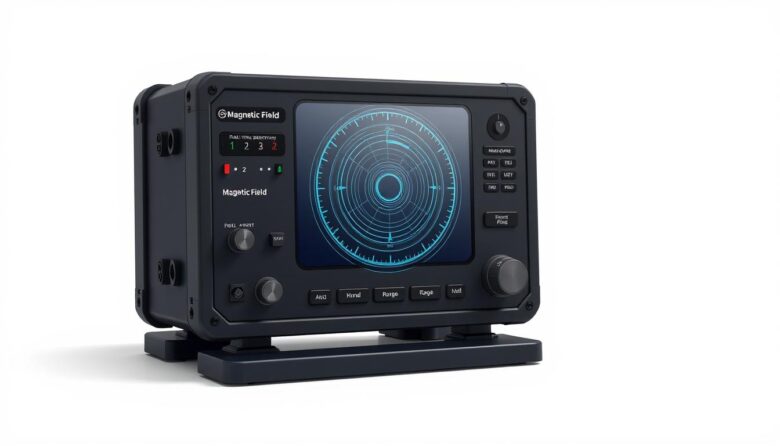Modern technology has made invisible energy sources measurable in everyday life. Electrical appliances, power lines, and wireless gadgets emit electromagnetic energy during operation. Concerns about prolonged exposure to these emissions have increased demand for tools that monitor environmental safety.
Advanced sensors now bring laboratory-grade measurement capabilities to consumer devices. These tools analyze low-frequency waves, static energy, and radio frequencies with precision once reserved for professional equipment. Users can identify electromagnetic hotspots in homes or workplaces using compact, portable solutions.
Understanding how detection works helps choose the right device. High-quality systems rely on calibrated components that track fluctuations in energy patterns. Real-time data empowers users to assess potential risks and adjust their environments accordingly.
This guide explores critical features of modern detection technology. Learn how integrated sensors balance accuracy, usability, and affordability—transforming complex scientific processes into practical solutions for health-conscious consumers.
Understanding the Basics of Magnetic Fields
Our planet constantly generates invisible forces that shape our environment. Natural energy patterns emerge from Earth’s core and mineral deposits, creating baseline conditions for life. These forces range from subtle background radiation to localized concentrations near specific geological formations.
Fundamentals of Magnetic and Electromagnetic Fields
The Earth’s natural energy varies by location. At the equator, readings average 25 microtesla, while polar regions reach 70 microtesla. Urban areas like Berlin (49 µT) and Karlsruhe (47 µT) demonstrate how geography influences these values.
Human-made sources add complexity to environmental energy profiles. Direct current systems and magnetized metals create persistent signatures. High-frequency applications produce dynamic patterns where electric and magnetic components interact continuously.
The Importance of Accurate Field Measurements
Distinguishing natural from artificial sources requires precision instrumentation. Overlapping energy patterns can amplify or cancel each other, altering perceived intensities. Detection tools must account for static formations, alternating currents, and rapid oscillations simultaneously.
Modern environments contain numerous permanent magnets in everyday devices. These elements demand measurement systems that filter background noise while identifying specific signatures. Proper analysis enables informed decisions about space utilization and equipment placement.
Innovations in Phone Magnetic Field Detector Technology
Recent breakthroughs in sensor design have revolutionized how environmental energy patterns are monitored. Compact systems now combine precision engineering with intelligent software, delivering insights once exclusive to specialized laboratories. These advancements make sophisticated analysis accessible through user-friendly interfaces.
Sensor Components and Measurement Mechanisms
Modern detectors utilize three-axis systems that assess energy signatures across X, Y, and Z coordinates simultaneously. This approach captures directional data and magnitude, creating detailed spatial maps of environmental conditions. Single-direction tools remain useful for basic scans but require manual adjustments to locate peak intensities.
Specialized rod-based configurations enhance sensitivity for specific tasks. Axial alignment measures energy flow parallel to the sensor’s length, while transverse positioning detects perpendicular patterns. Such versatility supports applications ranging from infrastructure inspections to personal safety checks.
Miniaturized components now enable laboratory-grade accuracy in pocket-sized devices. Advanced algorithms filter interference from overlapping frequencies, distinguishing between natural background radiation and artificial sources. Real-time processing triggers instant alerts when predefined thresholds are exceeded, empowering proactive responses.
These innovations merge robust hardware with adaptive software, transforming complex data into actionable insights. Users gain reliable tools to navigate modern environments confidently, backed by scientific rigor in everyday devices.
Essential Features and Considerations for Buyers
Selecting the right detection tool requires balancing technical specifications with practical needs. Advanced systems now offer customizable features that adapt to residential, industrial, or scientific environments. Prioritizing core functionalities ensures reliable performance across diverse scenarios.
Key Specifications and Measurement Ranges
Measurement range determines a device’s ability to capture energy patterns. Professional-grade tools cover frequencies from 30 Hz to over 300 GHz. Separate sensors often handle low and high frequencies due to differing wave properties.
Devices with wide frequency ranges identify subtle variations in energy distribution. Narrower models suit specialized tasks but may miss critical data points. Always verify specifications match your environment’s unique demands.
Calibration, Compatibility, and Software Applications
Regular calibration maintains accuracy as sensors naturally drift over time. Follow manufacturer guidelines for initial setup and periodic adjustments. Some systems automate this process using built-in reference standards.
Compatibility with third-party software expands analytical capabilities. Look for tools supporting real-time visualization and CSV exports. Cross-platform integration streamlines workflows when combining data from multiple sources.
Battery Life and Data Analysis Capabilities
Extended battery performance is crucial for fieldwork. Advanced power management prevents disruptions during long sessions. Some models offer replaceable cells or USB-C fast charging.
Built-in analysis tools detect trends in energy fluctuations. Heatmaps and time-stamped logs simplify reporting for safety audits. Prioritize devices with customizable alert thresholds for proactive monitoring.
Comparing Top Magnetic Field Detection Devices
Evaluating measurement tools requires understanding critical specifications that impact real-world performance. Leading manufacturers design equipment for distinct applications, balancing technical capabilities with user accessibility. This analysis highlights key differentiators between professional and consumer-grade solutions.
Model Reviews and Performance Benchmarks
Advanced analyzers excel in precision, tracking frequencies from 30 Hz to 300 GHz. These models generate spectral data maps, identifying energy sources through waveform patterns. Laboratory tests show ±2% accuracy in controlled environments, though real-world conditions may affect readings.
Simplified pen-style testers prioritize portability with non-contact operation. Their dual-range sensors detect subtle energy signatures near wiring or appliances. Independent trials confirm 90% consistency compared to calibrated reference equipment during basic scans.
Strength, Frequency Range, and Device Compatibility
Measurement ranges determine a tool’s versatility. Broad-spectrum devices handle industrial surveys, while focused models suit residential checks. Wireless integration expands functionality, enabling smartphone pairing for live data streaming and cloud storage.
Top-rated equipment supports cross-platform software, allowing CSV exports for detailed analysis. Compatibility with third-party apps helps technicians integrate readings into existing workflows. Always verify operating system requirements before purchase.
Real-World Applications and Use Cases
From household safety to industrial compliance, modern measurement tools address diverse challenges. These systems help users navigate environments where invisible energy patterns impact daily life. Practical implementations range from personal health monitoring to large-scale ecosystem studies.
Residential and Personal Use Cases
Homeowners use specialized testers to evaluate radiation from appliances like microwave ovens and wireless routers. These devices map energy levels near beds or workspaces, helping families minimize prolonged exposure. Portable models track Bluetooth signals and radio frequencies from smartphones during daily routines.
Health-conscious individuals assess cumulative exposure from office equipment and public transit systems. Compact sensors provide instant feedback, enabling smarter decisions about device usage. Many users customize alerts for specific thresholds linked to safety guidelines.
Industrial, Scientific, and Environmental Applications
Manufacturing plants rely on precision equipment to ensure electromagnetic compatibility. Technicians verify that industrial machinery doesn’t interfere with radio communications or control systems. Advanced testers identify interference sources in complex production environments.
Environmental teams monitor radio frequency emissions near cell towers and broadcast antennas. Researchers employ high-sensitivity tools to study energy impacts on migratory patterns and plant growth. These applications support regulatory compliance and ecological preservation efforts across multiple industries.
Ensuring Accuracy and Safety in Measurements
Reliable data collection hinges on proper techniques and environmental awareness. Users must balance technical precision with operational safety to maintain equipment integrity and personal well-being during analysis.
Proper Usage Techniques and Sensor Orientation
Three-axis alignment ensures maximum accuracy when assessing energy patterns. Position the sensor parallel to suspected flow lines for optimal results. If the primary direction is unclear, rotate the device systematically across all axes until peak values appear.
Calibration checks using known sources verify tool functionality before critical measurements. This practice prevents underestimation of environmental energy levels and confirms device responsiveness. Always document orientation details for consistent repeat testing.
Safety Precautions and Environmental Considerations
Inspect equipment for damage before each use. Compromised components may deliver false readings or pose electrical risks near high-voltage areas. Follow manufacturer guidelines for voltage thresholds—especially above 30V AC.
Temperature and humidity fluctuations can skew results by 5-12% in extreme conditions. Store devices in controlled environments when not in use. Cross-reference measurements with baseline data to identify anomalies caused by weather or interference.
Final Insights for Your Ideal Magnetic Field Detector Purchase
Choosing measurement tools requires matching technical capabilities with practical needs. Prioritize devices with three-axis sensors that capture multi-directional energy patterns. These systems deliver precise results across residential and industrial environments.
Verify equipment specifications against your primary use cases. Models analyzing earth magnetic signatures differ from those tracking electric magnetic oscillations. Confirm frequency ranges align with common sources in your workspace.
For consistent results, select tools with regular calibration cycles. Built-in validation features maintain accuracy over time, especially when measuring strength magnetic variations. Pair these capabilities with intuitive software for trend analysis.
Effective environmental assessments balance advanced features with user-friendly operation. Whether mapping natural fields or artificial emissions, the right device transforms complex data into actionable insights for informed safety decisions.



